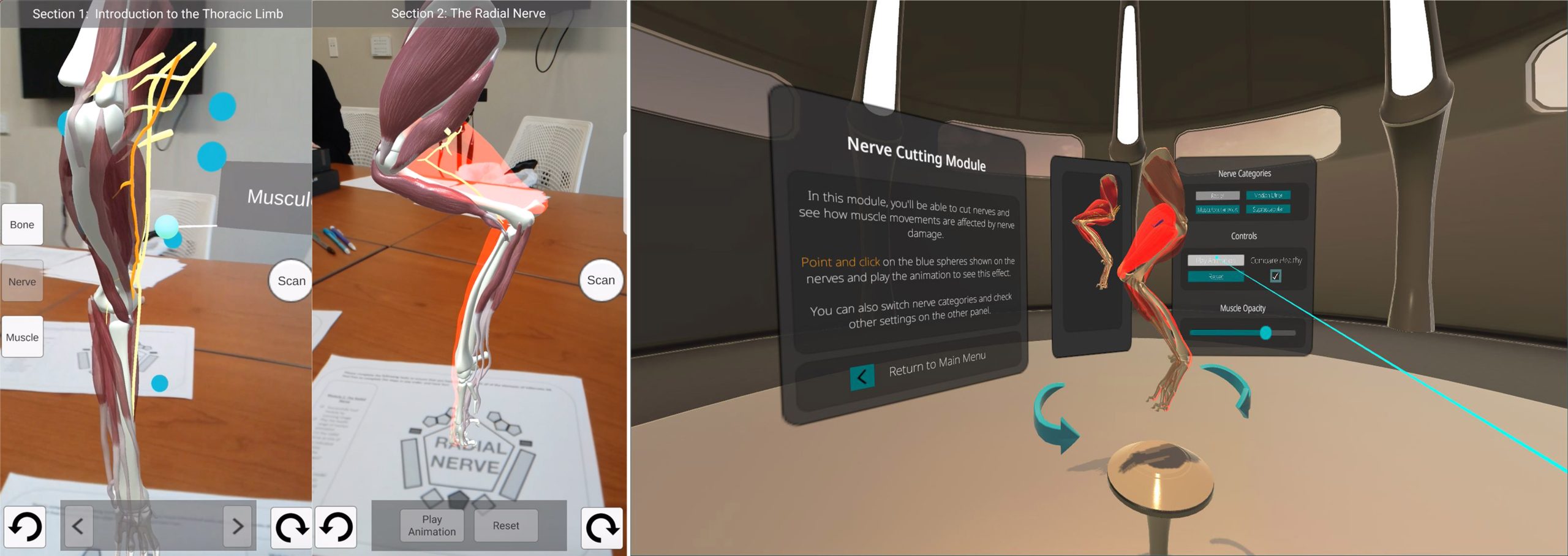“InNervate Immersion: Case Study of Dynamic Simulations in AR/VR Environments for Learning Muscular Innervation” by Ackley, Payne, Cook, Seo, Gonzalez, et al. …
Conference:
Type(s):
Entry Number: 29
Title:
- InNervate Immersion: Case Study of Dynamic Simulations in AR/VR Environments for Learning Muscular Innervation
Presenter(s)/Author(s):
Abstract:
We present a collaborative immersive technology effort, InNervate AR and InNervate VR. These applications meet the need to expand on existing anatomy education platforms by implementing a more dynamic and interactive user interface. This user interface allows for exploration of the complex relationship between motor nerve deficits and their effects upon the canine anatomy’s ability to produce movement. Preliminary AR user studies provided us with positive feedback in the quality of learning. The studies show that the dynamic touch interactions in AR definitely benefit students’ critical reasoning and spatial visualization in learning motor nerve and muscle relationships. However, users seek a more immersive VR-based learning environment, without the distractions that an AR experience may offer. Based on this feedback, a VR version of this learning experience was created. Preliminary responses show that users are satisfied with this VR environment which allows them to manipulate and control the anatomical content with full-body interactions.
References:
- Helene Hoffman and Vu Dzung. 1997. Virtual Reality: Teaching Tool of the Twenty-first Century? Academic Medicine 72, 12 (1997), 1076–1081. https://doi.org/10. 1097/00001888-199712000-00018
- Max Krichenbaue, Goshiro Yamamoto, and Takafumi Taketom. 2018. Augmented Reality versus Virtual Reality for 3D Object Manipulation. IEEE Transactions on Visualization and Computer Graphics 24, 2 (2018), 1038–1048. https://doi.org/10. 1109/TVCG.2017.2658570
- Sevda Kücük, Samet Kapakin, and Yüksel Göktaş. 2016. Learning anatomy via mobile augmented reality: Effects on achievement and cognitive load. Anatomical Sciences Education 9, 5 (2016), 411–442. https://doi.org/10.1002/ase.1603
- Kangdon Lee. 2012. Augmented Reality in Education and Training. TechTrends 56, 2 (2012), 13–21. https://doi.org/10.1007/s11528-012-0559-3
- Ayoung Suh and Jane Prophet. 2018. . Computers in Human Behavior The State of Immersive Technology Research[U+202F]: A Literature Analysis. Computers in Human Behavior 86, 1 (April 2018), 77–90. https://doi.org/10.1016/j.chb.2018.04.019




